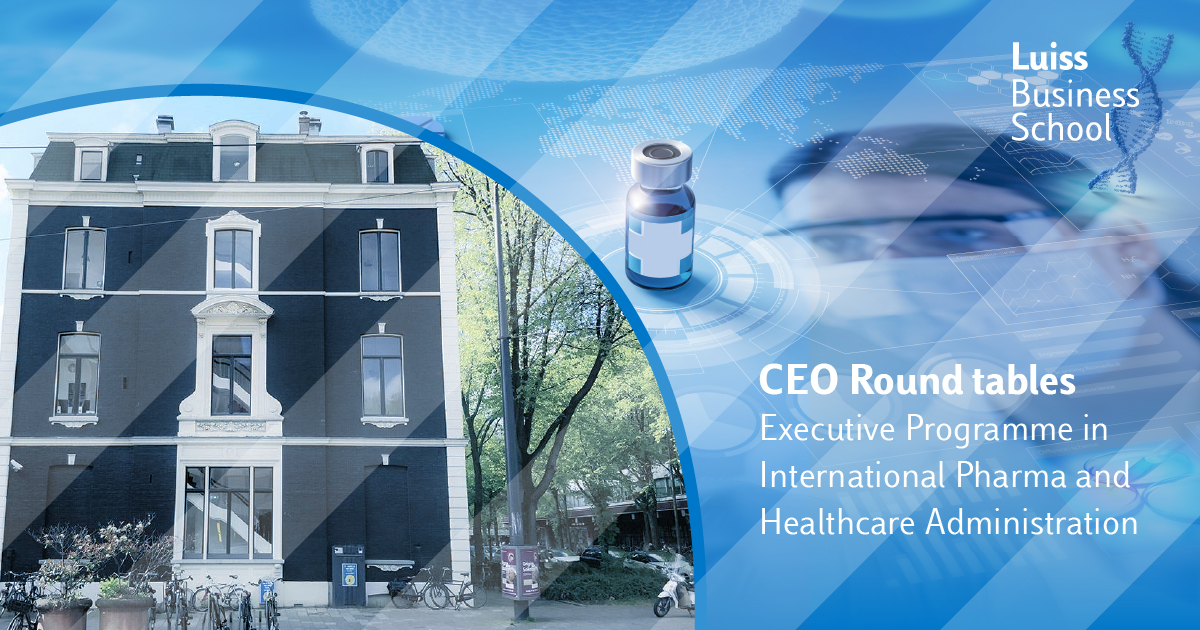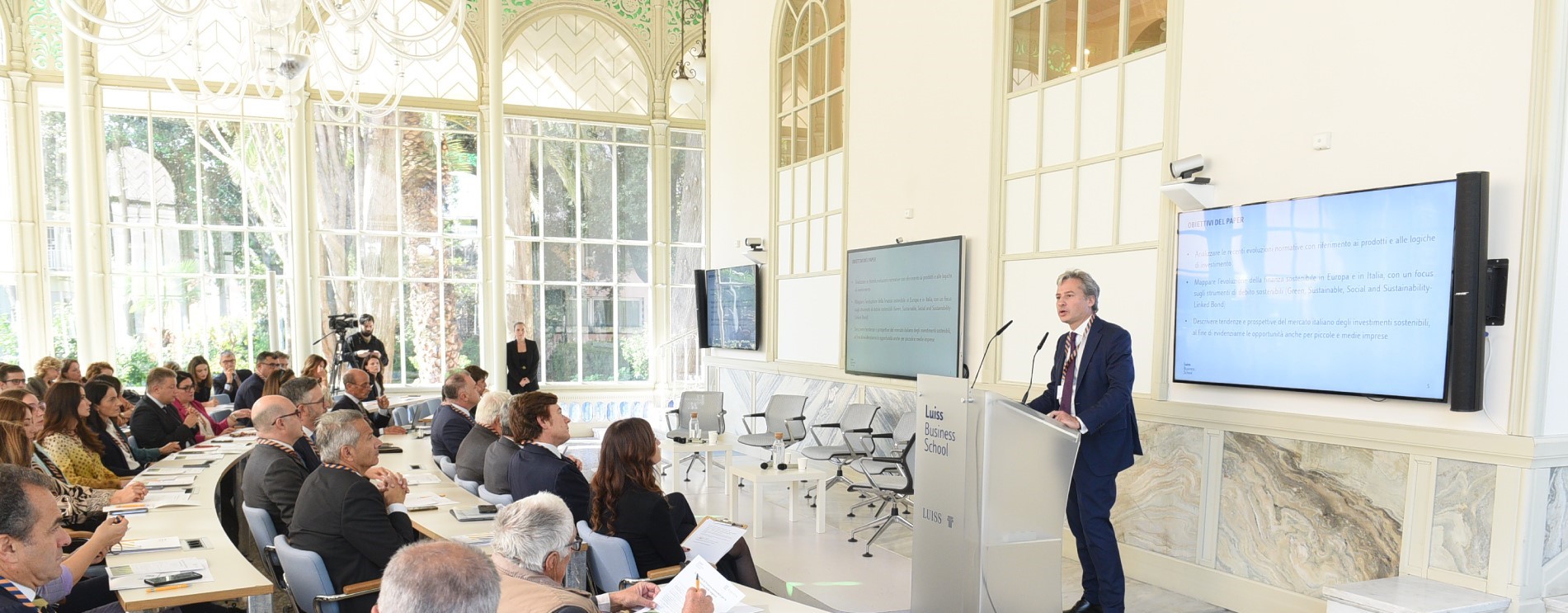
We thank HBR Italia for the report about the two “CEO Round tables” which took place during the kick off of the “Executive Programme in International Pharma and Healthcare Administration” with the participation of: Pierluigi Antonelli, CEO Angelini, Silvio Belletti, Partner BCG, Elcin Barker Ergun, CEO Menarini Group, Ugo Di Francesco, CEO Chiesi, Deborah Dunsire, CEO Lundbeck, Eriona Gjinukaj, COO Dompé, Jens Grueger, Director and Partner BCG & President ISPOR, Jordi Llinares Garcia[1], Work Stream Head at European Medicines Agency, Gianfranco Nazzi, CEO Almirall, Guido Rasi, Professor of Microbiology, Tor Vergata University, chair by Luca Magni, Professor of Practice Luiss Business School.
The full version of the article is now available in English. The new “CEO Round table” will be held with the start of the second edition of the programme on October 19, 2021.
The Impact of the pandemic on the pharmaceutical sector and the relationship between innovation and regulation: two of the hottest topics on the table of the CEOs of the pharmaceutical sector were discussed in the two panels organized by the Luiss Business School to present the first edition of the Executive Program in International Pharma and Healthcare Administration. The debates, introduced by Silvio Belletti and Jens Grueger, Partner of the Boston Consulting Group, were attended by main exponents of the Italian and world industry, and moderated by Luca Magni, Professor of Practice Luiss Business School.
During the first of the two panels, attended by Pierluigi Antonelli, CEO of Angelini, Ugo di Francesco, CEO of Chiesi and Deborah Dunsire, CEO of Lundbeck, as well as Guido Rasi, professor of microbiology and former director of AIFA and EMA, we discussed how the pandemic has impacted the operational dynamics of the pharmaceutical sector, focusing on three main themes, introduced by Silvio Belletti (BCG): the interaction between companies and doctors, the regulatory dynamics and clinical development, smart working.

Company-doctor interaction: towards a new-generation Customer Engagement
The pandemic first blocked and then reduced for several months the visits of scientific informants to doctors, forcing companies to reinvent the way to interact with prescribers, leveraging virtual instruments. If it is true that, as a BCG survey shows, more than 50% of doctors expects or hopes that the relationship between virtual and face-to-face interactions will remain the one seen during the pandemic, it is also true, as Deborah Dunsire pointed out, that “personal promotion and face-to-face interactions remain crucial, especially when it comes to promoting a new drug being launched“. For this, Pierluigi Antonelli hoped for “the transition to a hybrid model“, also stressing that it is “crucial that the development of digital skills is not limited to the sales force but involves the whole organization“.
Ugo Di Francesco is also on the same wavelength, highlighting how “the adoption of a digital-oriented business model has reached different levels of maturity depending on the geographical areas“, much more advanced in China and the United States, than in Europe.
Dunsire and Di Francesco also underlined how it is essential that pharmaceutical companies exploit the digital opportunity to promote contents that are as tailor-made and personalized as possible, in order to maximize the doctor’s customer experience and to express the commercial resolve in greater returns for companies.
Regulatory dynamics: new scenarios, but Europe risks being left behind
Just as the pandemic has impacted the interactions between business and physician, the world of clinical development has also seen significant changes along at least two main directions.
In the first place, with COVID the so-called virtual trials have doubled, that is to say those clinical studies where the recruitment of patients and/or the evaluation of the results take place remotely. Also, the pandemic and the vaccine rush have shown the possibility of significantly shortening the development and approval times of drugs (typically above 5 years).
It will now be essential to understand whether these accelerated development and approval timelines (which depend on various factors, including greater involvement of regulators in the development phases, parallelization of the same and the use of surrogate endpoints) can become the rule and not remain an exception due to the exceptional circumstances of COVID-19.
In this regard, Professor Rasi underlined how it is “more difficult for this to happen in Europe than in the United States“. The reason, however, would not be due to a more “conservative” approach by EMA compared to the FDA, but rather to the “difficulty in bringing together 27 member States in which a culture typically averse to risk prevails”.
Smart working: towards a hybrid model
Finally, the round table focused on the issue of remote working, a particularly hot topic in this moment of transition from a due smart working to desired smart working. As Antonelli pointed out, “even before COVID, hypotheses for the introduction of remote work were being studied” and, from this point of view, “the pandemic represented a sort of forced test that highlighted the strengths but also the limits of this model “. While it is true that the logistical advantages are out of the question (provided that employees are equipped with adequate tools), it is also true that collaboration and innovation risk to be, if not compromised, at least limited.
Consequently, as shared by Dunsire and Francesco, the need to “define hybrid models that allow you to benefit from the advantages of working from home without this translating into abandonment of the offices“, which must remain the beating heart of the company’s life, or the “backbone”, as Antonelli defined it.
Keeping up is essential
Rather than creating the need for a change, therefore, the pandemic has brought out needs that in a certain sense were already latent, imposing the need for companies in the sector to know how to reinvent themselves quickly and accelerating the introduction of new operating models, with a strong push on the digital element. The ability of companies to be able to seize this challenge in the required timeframes and in the best ways will be fundamental to obtain an advantage over competitors and, on the one hand, to capture market growth in the post “rebound” phase COVID and, on the other hand, be prepared for long-term challenges.
The second roundtable hosted Elcin Barker Ergun, CEO of Menarini, Eriona Gjinukaj, COO of Dompé, Gianfranco Nazzi, CEO of Almirall and Jordi Llinares, Head of the Research and Innovation Department of EMA, spoke. The introduction by Belletti and Grueger focused on how innovation in the pharmaceutical sector has been the protagonist of the last decade. Just think, for example, that the drugs for rare diseases approved every year in the United States ranged between 50 to more than 300, or that the market for “novel modalities” (such as, for example, gene therapies), which currently has revenues of approximately $ 3 billion, should increase its value tenfold in less than 5 years.
Despite a wave of innovation, which has made it possible to obtain results that were unthinkable until a few years ago from a clinical point of view, there are still several obstacles that complicate the approval processes or market access for new drugs.
USA and Europe: the numbers and the reasons for the gap
As shown by a study by the Boston Consulting Group, of the 220 drugs approved by the FDA in the United States between 2015 and 2019, only 97 were also approved in Europe and only in 22% of the cases this happened with shorter deadlines than in the United States.
For Eriona Gjinukaj “especially small and medium-sized companies in Europe encounter difficulties in obtaining approval from the regulatory body“. This requires a “greater flexibility in the evaluation of data relating to medicines that are administered to patients who often, without a cure, they would risk losing their lives”.
Jordi Llinares was also on the same wavelength, underlining that in Europe there would be “a cultural reluctance to collaborate between regulatory bodies, pharmaceutical companies and key opinion leaders in the clinical development phase, attributable above all to fears of possible conflicts of interest for the latter”, which would result in an inevitable slowdown in the approval times for drugs.
It is also interesting to note, as highlighted by Elcin Barker, that the gap between Europe and the USA is not only registered in terms of drug approval times, but also in the access times to individual national markets. In fact, if it is true that in some European countries, such as Germany, “it is preferred to allow patients immediate access to the drug, solving the issues related to price and reimbursement at a later time”, there are other national realities where instead the opposite happens, and “a long negotiation on prices heavily slows down the entry on the market of even highly innovative drugs”.
In this sense, Gianfranco Nazzi stressed “the need to work together to find a solution that has a financial basis and that allows the problem to be solved“.
Outcome-based models and the role of digital: a long but inevitable road
The discussion then moved on to how satisfy the need for payers to keep costs under control and, at the same time, guarantee the highest level of quality of care, with outcome-based reward models, which provide a reimbursement linked to the success of the therapy.
In this sense, Eriona Gjinukaj reiterated how for some time the industry has been trying to propose outcome-based models, which however “clash with the complexity of large-scale management even in countries – such as Italy – which have been the front line since several years“.
To this end, according to Grueger it is fundamental “to work on a common model among all European countries“, which potentially leverages – as Llinares hypothesized – on a “federation of European databases that uses data of type real world” to facilitate the adoption of outcome-based payment systems.
Emerging Countries: political instability undermines efforts towards advanced regulatory systems
The final parenthesis on emerging countries is also very interesting: if for Europe the fundamental issue is to close the gap with the United States in terms of flexibility of regulatory processes and marketing access, in emerging countries ” several drugs are not even available and the regulatory agencies are poorly structured and not very transparent”, underlined Gianfranco Nazzi. According to Jordi Llinares, “there have been efforts at a global level to create a sort of” African EMA “and the EMA itself has entered into bilateral agreements with various developing countries to strengthen the skills of local regulatory bodies”. Political instability, however, weighs like a boulder on the attempts to carry out these projects and to bring emerging countries in step with the more economically developed ones.
Renew regulatory processes to capture innovation
A situation in which, as Silvio Belletti pointed out, innovation grows at a much higher rate than GDP, witnesses the difficulty in being able to capture the value of innovation itself. To reverse the trend, it therefore becomes essential to renew the regulatory processes, simplifying them and aligning them, as far as possible, with US best practice. Shorter approval and access times, collaboration between companies, key opinion leaders and regulatory bodies even during clinical trials, outcome-based models that reward products with the greatest impact on patients’ health: the challenges are not lacking, it’s up to Europe collect them and direct them towards creating a success story.
[1] With great sadness we join the grief of family, friends and colleagues for the sudden and unexpected passing away of Jordi Llinares Garcia.
10/5/2021













